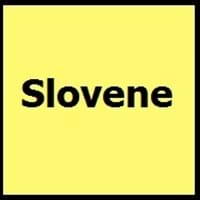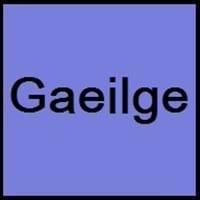Slovene and Irish
Countries
European Union, Slovenia
European Union, Ireland
National Language
Austria, Croatia, Hungary, Italy, Slovenia
Ireland
Second Language
Not spoken in any of the countries
Ireland
Speaking Continents
Europe
Europe
Minority Language
Austria, Hungary, Italy
United Kingdom
Regulated By
Slovenian Academy of Sciences and Arts
Foras na Gaeilge
Interesting Facts
- The Freising Monuments is the oldest preserved records of written Slovene from 10th century.
- The first Slovene book was printed in 1550.
- In Irish language, there are no exact words for "yes" or "no".
- There are different set of numbers for counting humans and another set for counting non-humans in Irish Language.
Similar To
Serbo-Croatian
Not Available
Derived From
Not Available
Not Available
Alphabets in
Slovene-Alphabets.jpg#200
Irish-Alphabets.jpg#200
Writing Direction
Left-To-Right, Horizontal
Left-To-Right, Horizontal
Thank You
Hvala
Go raibh maith agat
How Are You?
Kako se imate?
Conas atá tú ?
Good Night
Lahko noč
Oíche mhaith
Good Evening
Dober večer
Tráthnóna maith duit
Good Afternoon
Dober dan
Tráthnóna maith duit
Good Morning
Dobro jutro
Dia dhuit ar maidin
Please
Prosim
le do thoil
Sorry
Oprostite
Tá brón orm
I Love You
Ljubim te
Is breá liom thú
Excuse Me
Oprostite
Gabh mo leithscéal
Dialect 1
Prekmurje Slovene
Connacht Irish
Where They Speak
Hungary, Slovenia
Connacht
How Many People Speak
Not Available
Dialect 2
Resian
Munster Irish
Where They Speak
Italy
Munster
Dialect 3
Styrian
Ulster Irish
Where They Speak
Slovenia
Ulster
Speaking Population
Not Available
Not Available
Second Language Speakers
Not Available
Native Name
Not available
Gaeilge (na hÉireann) / An Ghaeilge
Alternative Names
Slovenian, Slovenscina
Erse, Gaeilge, Gaelic Irish
French Name
slovène
irlandais moyen
German Name
Slowenisch
Mittelirisch
Pronunciation
[slɔˈʋèːnski ˈjɛ̀ːzik], [slɔˈʋèːnʃt͡ʃina]
[ˈɡeːlʲɟə]
Ethnicity
Slovenes
Irish people
Language Family
Indo-European Family
Indo-European Family
Subgroup
Not Available
Celtic
Branch
Not Available
Goidelic
Early Forms
No early forms
Primitive Irish, Old Irish, Middle Irish, Classical Irish, Irish
Standard Forms
Slovene
An Caighdeán Oifigiúil
Signed Forms
Not Available
Irish Sign Language
Scope
Individual
Individual
ISO 639 6
Not Available
Not Available
Glottocode
slov1268
iris1253
Linguasphere
53-AAA-f
50-AAA
Language Type
Living
Living
Language Linguistic Typology
Not Available
Verb-Subject-Object
Language Morphological Typology
Fusional
Fusional
All Slovene and Irish Dialects
Most languages have dialects where each dialect differ from other dialect with respect to grammar and vocabulary. Here you will get to know all Slovene and Irish dialects. Various dialects of Slovene and Irish language differ in their pronunciations and words. Dialects of Slovene are spoken in different Slovene Speaking Countries whereas Irish Dialects are spoken in different Irish speaking countries. Also the number of people speaking Slovene vs Irish Dialects varies from few thousands to many millions. Some of the Slovene dialects include: Prekmurje Slovene, Resian. Irish dialects include: Connacht Irish , Munster Irish. Also learn about dialects in South American Languages and North American Languages.
Slovene and Irish Speaking population
Slovene and Irish speaking population is one of the factors based on which Slovene and Irish languages can be compared. The total count of Slovene and Irish Speaking population in percentage is also given. The percentage of people speaking Slovene language is Not Available whereas the percentage of people speaking Irish language is Not Available. When we compare the speaking population of any two languages we get to know which of two languages is more popular. Find more details about how many people speak Slovene and Irish on Slovene vs Irish where you will get native speakers, speaking population in percentage and native names.
Slovene and Irish Language Codes
Slovene and Irish language codes are used in those applications where using language names are tedious. Slovene and Irish Language Codes include all the international language codes, glottocodes and linguasphere.





